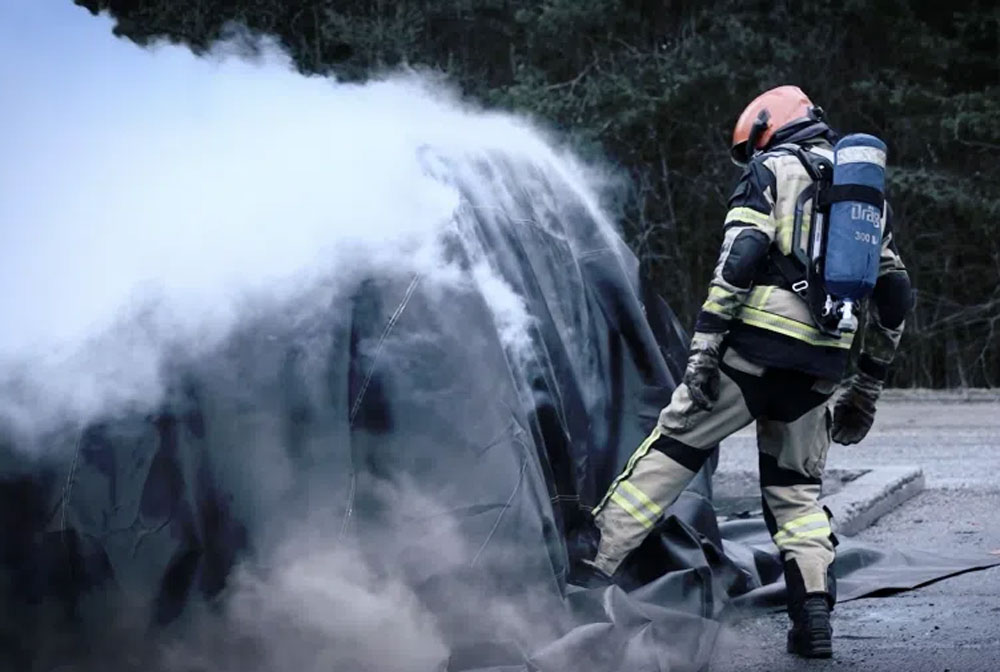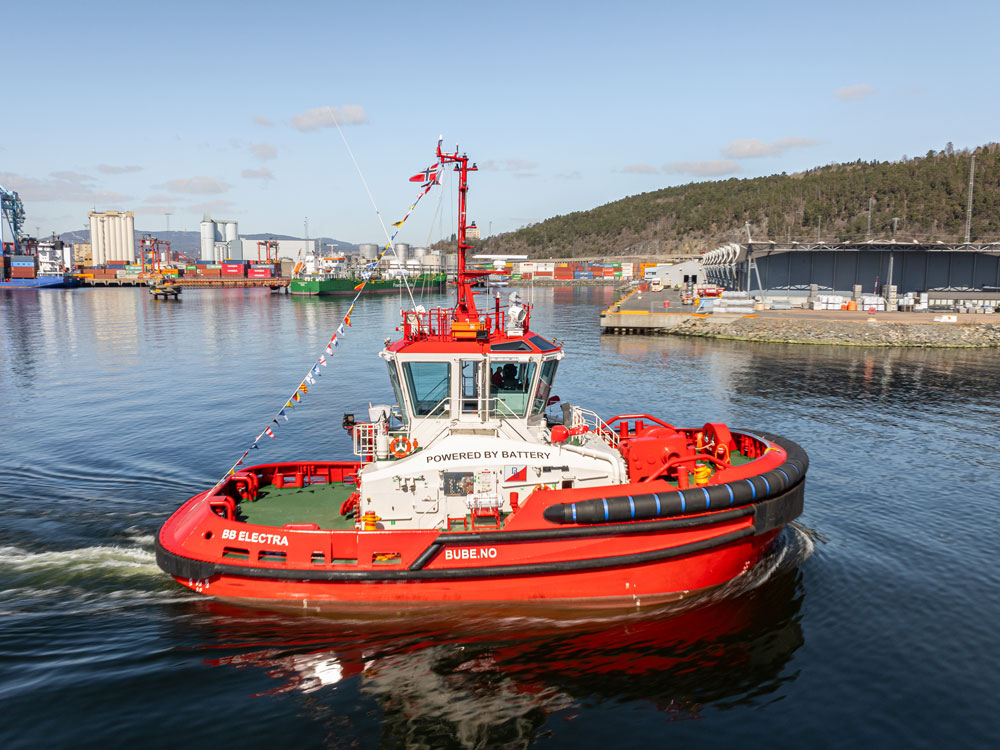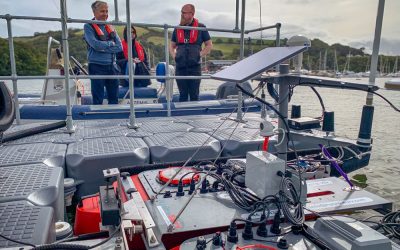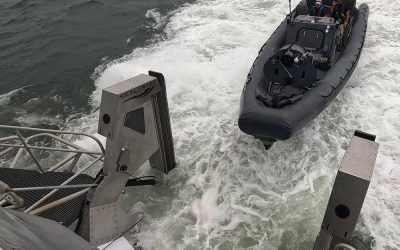Updated guidance on tackling ‘non-traditional’ fires, including those involving batteries and alternative fuels, take prominence in the British Tugowners Association’s (BTA’s) recently published Use of Tugs in Firefighting e-doc, which offers industry-standard guidance for tug operators.
“In 2023, over 200 shipboard fires were reported globally, highlighting the urgent need for effective firefighting protocols,” the BTA says. “Additionally, with the growing prevalence of alternatively fuelled vessels, such as those powered by lithium-ion batteries, methanol and ammonia, the guide addresses a critical gap in practical marine firefighting procedures.”
The UK-specific guide (drawn up to comply with SOLAS and Merchant Shipping Act requirements) was developed with input from Lloyd’s Register, UK Harbour Masters, Hampshire Fire & Rescue, REACT Emergency Response, Artemas Academy and Multraship Towage and Salvage, among others. Additionally, Society for Gas as a Marine Fuel (SGMF) and Shipowners P&I contributed to the document. The contents include up-to-date information on areas such as: the legal obligation to assist persons in distress (as outlined in the abovementioned SOLAS/MSA requirements); the importance of conducting regular firefighting drills; and the different categories of FiFi-rated vessel, plus the equipment, monitor types and discharge rates required for each.
The guide notes: “As of May 2025, according to Clarkson’s World Fleet Register, 2,224 vessels in the global fleet [2%] were alternative-fuel-capable.” This is in addition to “an orderbook of 1,991 vessels, representing 52% of the tonnage in the global orderbook”. As such, the techniques traditionally employed to combat hydrocarbon-based fires may prove obsolete when up against alt-fuels like battery packs, LNG, LPG, methanol, ethanol, HVO/FAME, ammonia, hydrogen and even nuclear energy.
For example, the guide explains, while a lithium-ion (Li-ion) battery can store significant amounts of energy, it can be highly dangerous if it overheats and enters a state of thermal runaway, where it keeps producing more heat in a chain reaction. While Li-ion batteries are usually safe, problems occur if the battery becomes damaged, either due to physical impact, overcharging, extreme heat or issues with the battery’s control system.
“Thermal runaway generates large volumes of flammable gases that can catch fire very quickly and may also cause a vapour cloud explosion,” the guide warns. “Gases of a Li-ion battery fire are extremely white and should not be confused with a steam cloud.” When thermal runaway occurs, the battery can reach temperatures exceeding 1,600°C and violently release toxic gases, flames and pieces of the battery itself. This can spread to nearby batteries or flammable materials, rapidly making the fire more intense. The toxic gases form a vapour cloud that can easily explode if it builds up in a confined space without proper venting.
“Lithium-ion battery fires are extremely difficult to extinguish and boundary cooling of the affected area or vessel until the fire burns itself out is often the best course of action,” the guide advises. “The use of fixed firefighting systems on board and water jets for boundary cooling is the most effective known method for control.”

Each fire requires a specific response, depending on the source (image: Bridgehill)
The guide recommends that tugs called in to assist casualty vessels in the event of a Li-ion battery fire consider three factors. Firstly, the internal location of the fire: “due to the intense heat, it is possible there will be structural damage or hull integrity compromised, which could be exasperated through thermal shocking from boundary cooling water”, the guide notes. Secondly, vapour cloud venting: “the assisting vessel should remain upwind, and where possible on the weather side, of the area where the vapour cloud is being vented due to the potential toxic gases and toxic soot”, the guide explains. Thirdly: “the assisting vessel should remain a safe distance from the casualty vessel due to the explosion risk from the vapour cloud”.
Li-ion battery fires are tricky because they can restart days after they seem to have been put out, due to leftover chemical energy in the battery. This means water needs to be applied for a considerable period, though too much water could affect a burning ship’s stability. The water used to fight these fires can also become polluted with toxic metals, which can harm the environment and people’s health, so protective gear is essential for anyone involved in its containment.
Liquid ammonia, meanwhile, is toxic when inhaled: high concentrations of ammonia vapour can cause immediate irritation to the eyes, nose, throat and respiratory system, and prolonged exposure can lead to death.
“A liquid ammonia leak or spill requires a larger exclusion zone than LNG or LPG due to ammonia’s high relative density, which causes the ammonia vapour cloud to sink and pool on the deck or water surface,” the guide says. “It is more persistent and takes longer to dissipate compared to LNG or LPG, requiring larger exclusion zones.”
The most effective way to extinguish ammonia fires, the guide recommends, is “applying water via water spray”. However, crew should be aware that “applying large quantities of water to an ammonia liquid pool will increase the evaporation rate, making the fire larger”. The guide continues: “Water spray on ammonia vapour should be applied with caution, as it may result in the formation of ammonium hydroxide, a corrosive by-product. Recondensing ammonia vapour, in certain scenarios, can reduce the intensity of the release but must be carefully managed to avoid further liquid release.”
For the full article, see the Safety feature in the June 2025 issue of The Naval Architect




